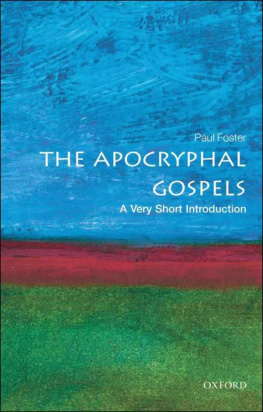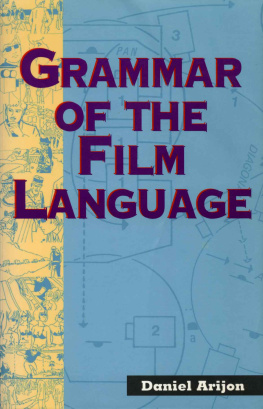N O BOOK HAPPENS without a great deal of assistance, and this one is no exception. To begin with, I must remember the late Jim Cash for his help and mentoring in the matter of screenplays and therefore of movies many years ago now. I never see a movie without thinking about him. Among my more recent influences is my colleague Fred Svoboda; it would be impossible to compute all the movies we discussed in our carpool over the years, between talking books, students, and food. My students over the decades have been invaluable resources from the film-and-freshman-writing track at Michigan State University to the literature students at the University of MichiganFlint. They gave me both surprising insights and penetrating questions about novels, plays, movies, and the interplay among them.
It is safe to say that this book might not have happened and certainly would not have turned out half so well without the timely intervention of Ivy Pochoda, who took time away from her own writing schedule to edit the manuscript. Her tough questions were as welcome as her praise, and her vision of what the book could be drove me to try to achieve those possibilities. I have been extremely lucky to find someone whose editing skills match her wonderful talent as a novelist. The entire team at HarperCollins has been a treat to work with, as always, but in finding Ivy to take over the project, they gave me a gift beyond measure.
To my longtime agent, Faith Hamlin of Sanford J. Greenburger Associates, I offer my profound thanks for the wisdom, toughness, and stability she provides. In the world of constantly changing editors, which is to say the world of publishing in any era, it is a blessing to have one person I can always count on for her steadfastness.
I am indebted to the various copyright holders who have lent permission for me to reproduce stills for this book: Woody Allen and Gravier Productions for Midnight in Paris ; Columbia Pictures for Lawrence of Arabia ; Getty Images/MGM for The Thomas Crown Affair (1968 and 1999) and A Fistful of Dollars ; Shout! Factory for Stagecoach ; Jesse Grant/Getty Images for photo of Johnny Depp; Warner Bros. for A Clockwork Orange , The Matri x, North by Northwest , and Captain Blood ; Roy Export SAS for City Lights ; and Paramount Pictures for Shane .
Finally, there are not words to express my love and gratitude to the person I describe in these pages as my Permanent Movie Companion. In addition to acting as my sounding board about movies, Brenda listens to my dubious ideas, puts up with my rants, gives me space to work, and generally smooths the road for me to be selfish in the way writers must be. Or at least this one must be. Without her, there are no books.
Twenty-five Books That Shaped America
How to Read Novels Like a Professor
How to Read Literature Like a Professor
Cinematic Exercises
or
Fun with Movie Stuff
M Y USUAL PRACTICE AT THIS POINT would be to offer a viewing/reading list for your supposed edification. Having gotten this far, however, you probably dont want to hear any more titles from me. So I thought I might set you some homework assignments. Oh, relax! Itll be fun. How hard can it be when the basic assignment is to watch movies? Besides, nobodys going to see your work but you, and you can grade on a curve. I know I would. So here goes.
Novelistic Relativity
At one point, I had a long comparison of two movies with one title: The Great Gatsby . In fact, it got so long and so involved that it threatened to sink the whole enterprise, and shortening it didnt seem possible, so I did what any rational person would doI killed it. Heres the problem that beat me downneither the 1974 Robert RedfordMia Farrow version nor the 2013 Leonardo DiCaprioCarey Mulligan installment convince me that Fitzgeralds novel can really be filmed. It has to do with the centrality of voice in the novel and the impossibility of re-creating that in the adaptations. In fact, the more of the novel they quote, the more we see that it cant be done. Still, thats no reason for filmmakers not to try or for us not to watch the results. Those two movies (I freely confess Ive never seen the Alan Ladd version from 1949, and its not entirely clear that anyone else has, either) have their flaws, but they also have some moments of inspiration. One is stately and sedate, the other frantic and busy. Even the musical choicesperiod jazz versus hip-hopunderscore the sharply different approaches. So heres the assignment. First, obviously, watch the two films. Then, depending on your history, follow the appropriate path. My guess is that the vast majority of you have read the novel. For you, compare the two versions. How do they compare? Where do they differ? How, for instance, does Bruce Derns Tom Buchanan compare with Joel Edgertons? And how does the difference matter? Finally, which one works for you? For those of you who have never read it, DONT (yet). Compare the two as stand-alone films. What do you like about each? What do you not like? And think about how they are or are not telling the same story. THEN read the novel and see what you think, having seen the films first.
Not a Fitzgerald fan? You can do the same with Far from the Madding Crowd , using the 1967 Julie ChristieAlan Bates film and the 2015 Carey Mulligan (there she is again)Matthias Schoenaerts version. Any pair of films adapting the same novel, but these are all very attractive movies in their own right.
Longitudinal Acting
To see how actors adapt to different settings or adapt over time, watch several films starring the same performer. Ive just mentioned Mulligan, and she has plenty more work out there. DiCaprio is another whose range and, now, length of performance history makes him a good candidate. My personal choices would be Peter OToole and Katharine Hepburn, and not only because they played opposite each other in The Lion in Winter . Of course, theres nothing to say you cant watch multiple films by someone still starting out. Think of Dev Patel in Slumdog Millionaire and The Best Exotic Marigold Hotel ; that would be worth it if only to watch him play off all those British screen veterans, especially Dame Maggie Smith. The only thing that matters is that the actor interest you enough to watch him or her for extended periods.
And So On
You can do this, naturally, with more than actors. You probably already have favorite directors, so youve done this with Tarantino, maybe, or the Coen brothers or Judd Apatow without even thinking about it. What happens if you do the same with someone with a little more riding time? Woody Allen has fifty years of movies out in the world, as did Hitchcock before him. And theyre not all the same, whatever people may say about an Allen film or a Hitchcock film. You could even do second unit directors, those folks who handle the action sequences and wrangle stunt performers for a living.
This approach also works for composers, although it takes a special effort of will for those of us who are not innately musical to focus on the score to the exclusion of all that visual information. Just pick a composer you like and follow the bouncing ball. Doesnt matter if its John Williams or Thomas Newman or Erich Korngold or Bernard Herrmann. You can also do the same thing with cinematographers or even editors, although it will take a lot of concentration. Im not sure you can extend the approach out to set painters, but you could certainly seek out art designers and costume designers.
Genre Studies

















